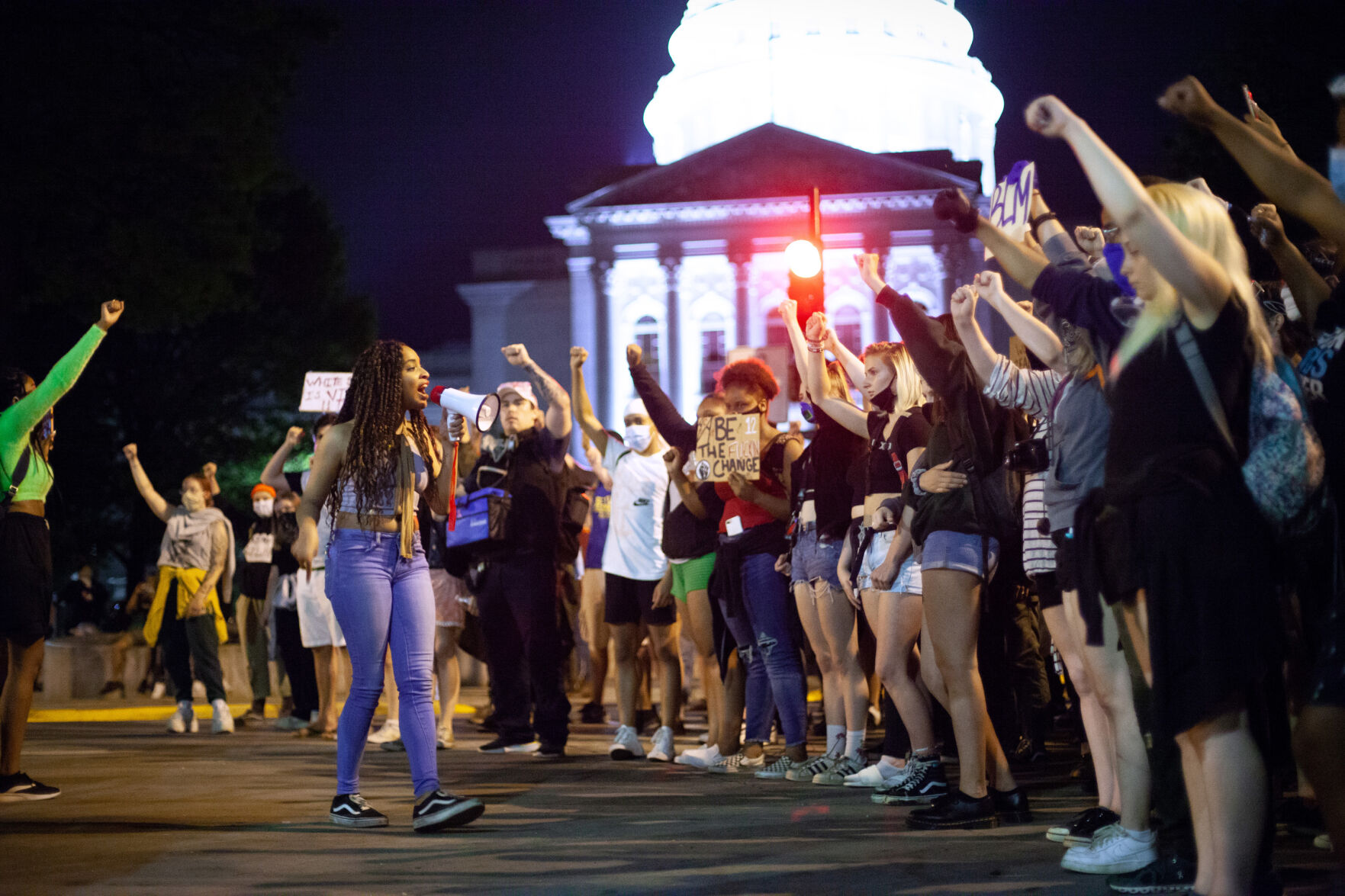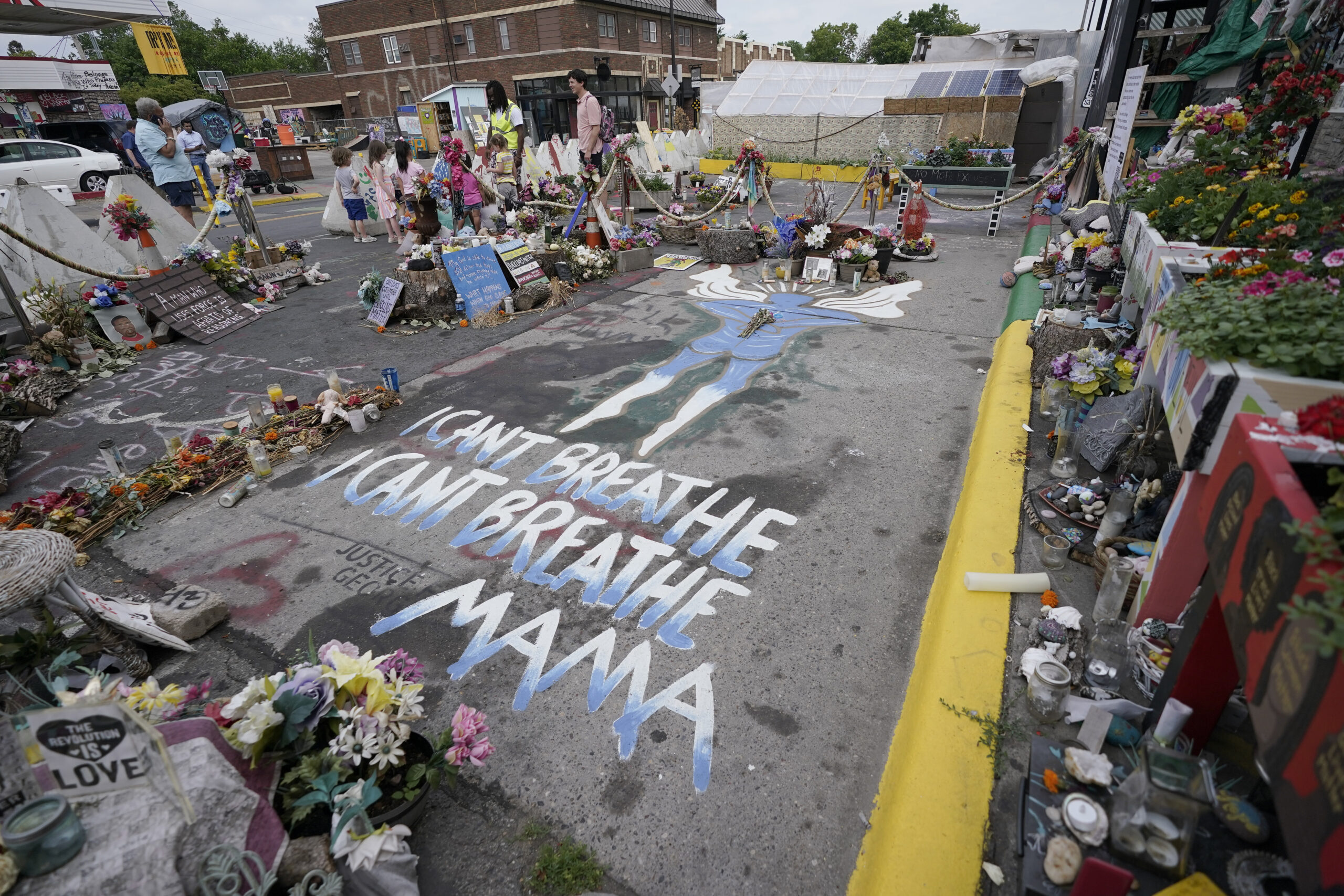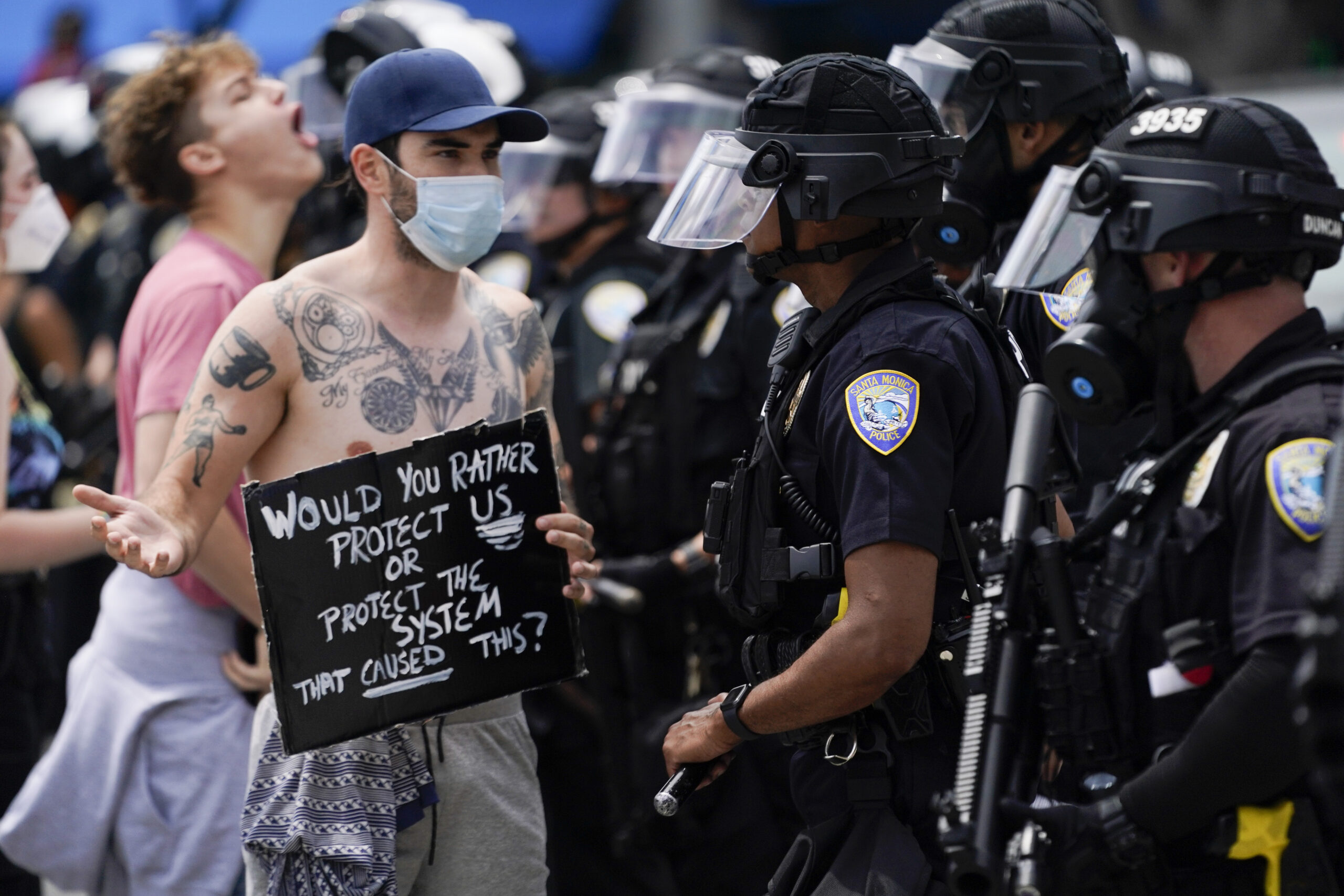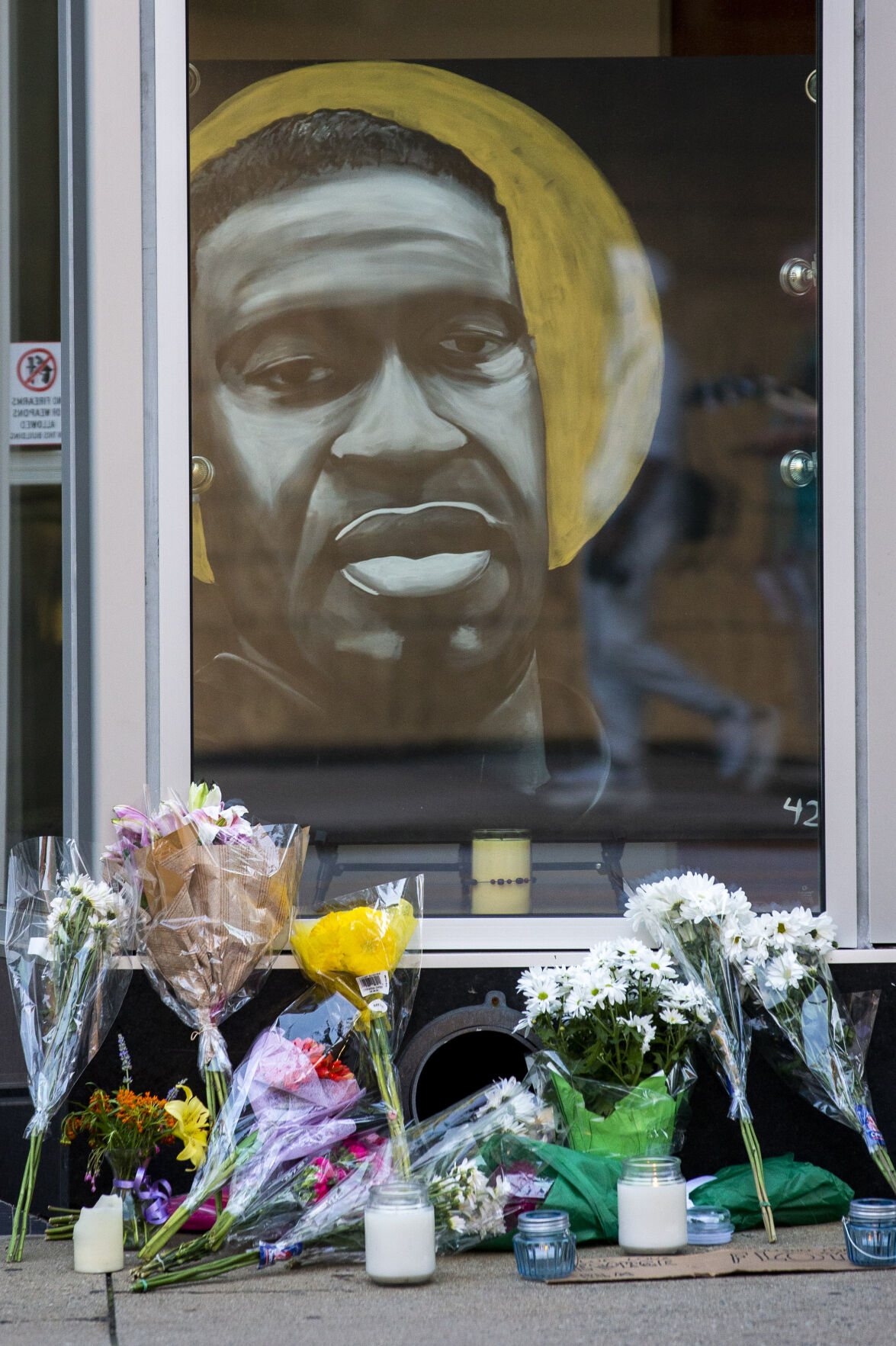Nearly three-quarters of more than 100 law enforcement agencies across much of the U.S. don’t reflect the racial makeup of their communities, data supplied by the departments to Lee Enterprises and Type Investigations shows.
As part of a seven-month investigation by Lee and Type Investigations, agencies were ranked based on the gap between the proportion of officers and leadership in the agency who identify as people of color and the percentage of people of color in the communities they serve.
Lee reporters sent surveys to more than 170 law enforcement agencies and then zeroed in on “diverse” communities, defined in this research as places where at least 10 percent of the residents are non-white.
Of 105 agencies that provided demographic data and served “diverse” communities, 76 underrepresented the percentages of people of color in their communities by 10 points or more. Some had gaps of more than 30 percentage points.
Diversity underrepresentation in policing
Data gathered from October 2022 to May 2023 from nearly 120 law enforcement agencies in 14 states shows frequent disparity in the racial and ethnic makeup of the agencies compared to the communities they are hired to protect and serve.
These are among several key observations drawn from data submitted by state and local law enforcement agencies largely in the Midwest and East, near areas where Lee properties are based. The data show that thousands of people of color live in communities where the force looks nothing like them, despite calls for increased law enforcement diversity that echoed through U.S. streets three years ago following the murder of George Floyd.
Twenty of the 105 agencies serving diverse communities have no people of color or only one such person on the force.
Also, in nearly half of the 93 agencies serving diverse communities that gave data on leadership, there were either zero or only one person of color in leadership.
Why police diversity matters
Experts within and outside law enforcement say the continued representation gap — the subject of discussions that go back decades — underscores existential questions about how police “protect and serve” people of color.
A study released in November by the Bureau of Justice Statistics that collected data in 2020 about interactions with police over the previous year showed that Black people were three times more likely than white people — 6 percent vs. 2 percent — to have experienced the threat of force or use of nonfatal force during their most recent police contact.
The report also showed that during that time frame, Black people had the highest likelihood of experiencing any type of police misconduct (5%), more than double that of white people and Hispanic people combined.
While improving diversity doesn’t solve issues like excessive force or biased policing, it can begin to cause a shift.
“The more diverse we are as it relates to race and ethnicity, the more diverse we are also in life experiences, which helps agencies to better inform policies, also better inform their training, and better inform their support systems as well,” said Darryl McSwain, chief of the Maryland-National Capital Park Police force and a 2021 finalist for the post of top cop in Lincoln, Nebraska. “So I think that’s why it’s so crucial that we continue to diversify.”
Most agencies surveyed underrepresent communities of color
The Lee law enforcement survey is an update and expansion of a similar effort launched in the Midwest in the summer of 2020 as the nation was reeling from weeks of protests after Derek Chauvin, a white then-police officer in Minneapolis, pressed his knee to the neck of Floyd for more than 9 minutes, according to prosecutors who won a murder conviction against Chauvin.
For the current investigation, police and sheriff’s departments along with state patrols in more than a dozen states responded to a two-page survey seeking data on topics including the demographic breakdown of the sworn personnel and leadership, the use of body and dashboard cameras, and the number of racial profiling and excessive force complaints.
Nearly 120 agencies provided demographic information on race and ethnicity. Most also provided information on the gender breakdown of the department. In 14 of the communities, people of color — identifying as Black, Hispanic/Latinx, Native American/First Nation and Asian American/Pacific Islander — made up less than 10 percent of the population served. Not surprisingly, the law enforcement agencies there were all or largely white.
Lee also received demographic data from 105 agencies serving diverse areas based on 2020 U.S Census data, which Lee also used to draw comparisons with their respective police-force demographics:
Seventy-six of the 105 agencies, or about 72 percent, underrepresented their communities of color by 10 percentage points or more. In Martinsville, Virginia, more than half of the community — roughly 57 percent — was composed of people of color, while people of color accounted for about 12 percent of the force. The largest agency to respond to the survey was the 4,741-member New York State Police. People of color made up about 45 percent of the population in the department’s jurisdiction and 12 percent of the force — a gap of 33 percentage points.
Twenty-eight departments came within 10 percentage points of matching the diversity levels of their communities. They range in size from the seven-member Hebron Police Department in Indiana to the 488-member police department in Madison, Wisconsin.
In Hebron, about 12 percent of the population and 14 percent of the force were people of color. In Wisconsin’s capital, 28 percent of the community and 23 percent of the force were made up of people of color.

Youth organizers amp up protesters on the Capitol Square in Madison during a nighttime demonstration, June 2, 2020. Image: Wisconsin State Journal file photo
As a group, the 119 agencies — police departments, sheriff’s offices and state police — that supplied diversity data appear to skew whiter than local law enforcement across the U.S. overall. This is based on part- and full-time personnel numbers provided by the 119 agencies compared with the latest law enforcement demographics for full-time personnel collected by the Department of Justice in 2020.
In the 82 police departments in the group, nearly 79 percent of sworn members identified as white versus about 69 percent of full-time sworn officers in local police departments in 2020.
Lee found similar disparities among the 31 sheriff’s departments in the group. Eighty-seven percent of sworn members identified as white, 16 percentage points greater than the roughly 71 percent of full-time sworn officers in sheriff’s departments nationwide who identified as white in 2020, according to the DOJ.
So what do all these numbers mean?
In Martinsville, Virginia, which describes itself as a “city without limits,” the lack of diversity on its police force has not gone unnoticed. Of a force of 41 sworn members, the Martinsville police department has four Black officers and one Hispanic officer, said Maj. Chad Rhoads, part of the department’s leadership team.
“I certainly do acknowledge the gap,” Rhoads, who is part of the department’s leadership team, said. “It’s certainly not representative of the community, but we want to get it there. But it’s just something that we’ve always struggled with.”
Rhoads said the department tried attending job fairs at nearby historically Black colleges and universities but got no applicants, a problem it has experienced at college job fairs in general. He said the department does not have a specific program to recruit people of color. It relies on “grassroots” efforts including using school resource officers to forge connections with students.
Of course, Martinsville is far from the only city with a force that does not reflect the population. Sgt. Betsy Brantner Smith, a police trainer and spokesperson for the National Police Association, an educational and advocacy group, links the quest for diversity to law enforcement’s challenge of attracting applicants overall.
“Since 2020, American law enforcement, we, have (had) a very difficult time just recruiting and retaining police officers of any race and any gender,” said Brantner Smith, who was a police officer for 29 years beginning in 1980. “So right now, as a country … we’re just trying to get people to come to the law enforcement profession. People are leaving in record numbers. They are leaving prior to receiving their retirement, and it’s becoming a real crisis.”
Departments are increasing their use of technology and social media and beginning to recruit more broadly to boost ranks, Brantner Smith said, but “whether we’re talking post-George Floyd or we’re talking in general, not everyone is attracted to this profession.”
Call for police diversity reaches zenith after George Floyd’s death
Long before Floyd’s murder sent thousands of protesters into the streets, community activists and private citizens had called for a more just and representative law enforcement system.
That chorus reached a crescendo after Floyd’s Memorial Day 2020 murder and included a “21 pillar” proposal outlined in 2021 by the National Urban League, which, among other demands, called on communities and law enforcement leadership to “increase diversity and equity in both the leadership and ranks of local, state and federal law enforcement.”

The site where George Floyd was killed by then-Minneapolis Police officer Derek Chauvin, June 24, 2021, in Minneapolis. Image: Julio Cortez/AP Photo
Most law enforcement leaders and experts interviewed for this story listed similar reasons to push for more diversity in police forces, including helping to establish better relations with diverse communities and having role models who can attract other diverse candidates.
“If we want to have a relationship with our community, and we want our community to be a part of this ecosystem of public safety, then we want our police force to be reflective of the communities that we’re in,” said Regina Holloway, vice president of community impact for Axon, maker of equipment for law enforcement, notably Tasers and cameras.

A demonstrator confronts a police officer June 2, 2020, in the Venice Beach area of Los Angeles during a protest over the death of George Floyd. Image: Ashley Landis/AP Photo
“I think it’s not impossible by any stretch. We want all officers to be equitable across the board, but I do think that there’s this opportunity for an officer of color — a Black officer, a brown officer — to have lived experience that they can relate to community members that are having challenges around public safety, challenges in the community, right? There’s going to be a kinship there, possibly, that will create a deeper relationship at the on-site of that interaction.”
She referred to a study of the Chicago Police Department, published in Science magazine, examining data on officer demographics and behavior from 2012-2015 that found that when compared with white officers, Black and Hispanic officers made far fewer stops and arrests and used force less often, especially against Black civilians.
“What we know is that Black and brown officers are less likely to stop people for low-level offenses,” Holloway added. “And they’re less likely to have sort of these negative interactions with community.”
High-profile deaths in 2023 fuel debate over ‘biased culture’
That assertion fueled major debates earlier this year in two highly publicized deaths of Black citizens following interactions with law enforcement members, most of whom were people of color.
In late April, the family of Tyre Nichols filed a $550 million federal lawsuit against the city of Memphis, the city’s police department, and what the suit described as “unqualified, untrained and unsupervised” officers who severely beat the 29-year-old Black man after a traffic stop and brief foot chase Jan. 7, according to news reports and video that was later shared with the public. He was hospitalized and died three days later.
Five former Memphis police officers — all Black — were fired within weeks of the incident. Each faces multiple charges, including second-degree murder, aggravated assault, aggravated kidnapping, official misconduct and official oppression, according to news reports.
In Virginia, in a death that conjured images of Floyd pinned beneath Chauvin’s knee, Henrico County deputy sheriffs piled onto Irvo Otieno, a 28-year-old Black man in shackles suffering a mental health crisis, as he was being admitted to Central State Hospital. He died of asphyxiation, a medical examiner found.
Otieno, whose family said he had been diagnosed with bipolar disorder, died March 6 while in custody of the Henrico County Sheriff’s Office.
Hospital video shows the group pinning him down for close to 12 minutes, and there’s no audio. The sheriff’s office told Lee it does not use body cameras.
Of the seven sheriff’s deputies charged with second-degree murder in the case, five are Black, two are white. In fact, Henrico County’s sheriff’s office was among the most-diverse departments in the Lee survey when compared to the population of the county. People of color made up 49 percent of the population and about 68 percent of the force, for an overrepresentation of nearly 20 percentage points.
In the Nichols case, Benjamin Crump, a noted civil rights attorney representing the Nichols family, told ABC News that he believes Nichols was a victim of an “implicit bias police culture that exists in America.”
Crump said Nichols’s death occurred despite recent police reform in Memphis because of “the institutionalized police culture that makes it somehow allowed that they can use this type of excessive force and brutality against people of color. And it doesn’t matter if the officers are Black, Hispanic, or white. It’s part of the culture, this biased culture that said this is allowed.”
Leaders seek change, professionalism and better data
Attempts to steer departmental culture in a more inclusive direction often fall to the chief or sheriff. It can be a daunting task regardless of their ethnicity.
Jamal A. Simington, chief of the Bloomington Police Department in Illinois, identifies as African American and is the only person of color in leadership in his 123-member department, with less than 10 percent of the force composed of people of color. That’s in a community where 27 percent of residents are people of color.
Simington, who said he has been called the N-word and Uncle Tom, thinks leaders must foster and model a culture of professionalism regardless of race.
“You need the representation with high levels of professionalism,” said Simington, who was drawn to law enforcement by family members who served. When asked about the roles of officers of color in the deaths of Otieno and Nichols, Simington said, “It does reflect horrible on the badge. It tarnishes everything we stand for, right? It’s supposed to be a noble occupation. So the nobility comes from our capability and our mindset on how to treat people [in a way that’s] fair and appropriate. That’s if you’re a person of color or not.”
There has been limited research on the role of officers’ race on their interactions with citizens.
The latest report by the Bureau of Justice Statistics on encounters with police did not list the race of the officers involved.
A database by the Washington Post tracking fatal police shootings since 2015 shows that Black Americans, who account for about 14 percent of the population, are killed by police at more than twice the rate of white Americans. The database also does not list the race of officers.
The Lee survey asked agencies to share numbers for excessive force and racial profiling complaints logged between 2017 and 2022. More than 100 responded. Some declined to provide data or suggested other sources for it. Thirty-nine agencies surveyed said they had no complaints fitting in either category in any of those years. There is also variation in how each agency categorizes complaints. Some responded with numbers for allegations described in broader terms such as “biased policing” and “use of force.”
The Greensboro Police Department in North Carolina, which is nearly 70 percent white in a community that is less than 40 percent white, had 121 “biased-based policing” allegations, including bias other than race, between 2017 and 2022. It also had 14 allegations of excessive force during that same period. Allegations are not always sustained by the department once investigated. In an email, the department said its investigations found that three of four allegations of excessive force were found to be valid in 2021-22, and no allegations of biased policing initiated by citizens were sustained in that period.

A memorial to George Floyd in front of the International Civil Rights Center and Museum in Greensboro, N.C., on June 3, 2020. Image: Woody Marshall/Greensboro News & Record
Stephanie Mardis is captain of the Greensboro Police Department’s Professional Standards Division, which handles matters related to internal affairs. She told Lee she recognizes the need for improving diversity in the department’s ranks.
Having a force that was more representative of the community “may not necessarily mean that our complaints will decrease,” she said. “It may not necessarily mean that we will have less use of force, but on its face, if a police department reflects the community in itself, it inherently gains trust with people from all walks of life.”
The department gives the public access each year to its complaint numbers via an annual report; however, it does not list the race or ethnicity of the officer.
Tracie L. Keesee is COO, president and co-founder of the Center for Policing Equity, which uses data and science to help law enforcement look at “harm reduction when it comes to issues of race” and reimagine “public safety in a way that centers community.”
She feels there should be more robust, peer-reviewed studies that look closely at the differences in negative outcomes for people of color when interacting with diverse vs. non-diverse departments.
“The science is so scant,” she said.
For starters, Keesee said, law enforcement agencies need to better track both the diversity of their members and how they interact with citizens. “We want law enforcement departments to start collecting data appropriately, and we want to make it available to everyone so we can do exactly what you’re talking about,” she added. “So we can look at and be able to try to begin to answer those questions.”
Lee Enterprises reporters Alison Burdo, Lauren Cross, Lizzie Kaboski, Analisa Trofimuk and Patrick Wilson contributed to this report. Research by Emma Davis of Type Investigations. Karen Robinson-Jacobs is a member of the Lee Public Service Journalism team and a Type Investigations reporting fellow.